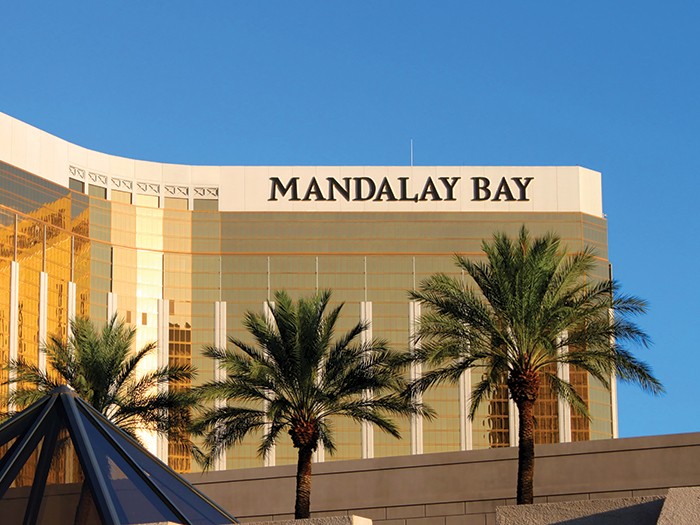This Director of Workers’ Comp for MGM Resorts Says Tech Is the Industry’s Biggest Innovation

This year, the National Workers’ Compensation and Disability Conference® & Expo graced the halls of the Mandalay Bay Resort and Casino in Las Vegas.
Conference-goers might have noticed the small army of Mandalay Bay employees working behind the scenes, supporting our efforts to make NWCDC a seamless and positive experience. Ensuring the health and safety of those hardworking folks is Denise Parr, director of workers’ compensation for MGM Resorts International.
Risk & Insurance® asked Parr to share her insights as a fellow industry professional.
Risk & Insurance: How did you come to work in the workers’ comp field?
Denise Parr: I have to say I didn’t directly seek out the workers’ compensation field. Roughly 33 years ago, a close friend of mine delivered an application to my previous job (I worked for a well-known Handicapper in the ’80s in Las Vegas). I filled out the application and landed my first job with the State Industrial Insurance System in the underwriting department when — Nevada was a monopolistic state for workers’ compensation.
The rest of the story writes itself. I bounced around from underwriting to the claims audit department, where I learned the claim process. After a few years in audit, I went straight into the claims department where I began handling lost time cases with a case load of 2,500-plus claims. I learned to manage volume for the state over the course of about 13 years and even [crossed over] into the private insurance [market] after the state was no longer a monopolistic state.
It was after this change when I was presented with an opportunity with a large insurance company to oversee the entire state of Nevada workers’ compensation program. I took these 10 years of oversight experience and parlayed it into a management career here with MGM Resorts International. I carry AIC, AIS and AINS accreditations, and continue to retain licensure for property and casualty adjusting. While I don’t claim to master everything, I feel that my work history has given me a solid foundation in most things workers’ compensation related.
R&I: Since you’ve been in the industry, which innovation in workers’ comp has had the biggest impact on the work you do?
Parr: The biggest innovations in the last 30 years are unequivocally computer related. I spent my first years on typewriters and early word processors, and now almost everything is electronic.
The accessibility that computers bring allows instantaneous contact, which only helps to enhance the customer service relations. MGM Resorts International continues to be at the forefront of these advances, which we hope to continue to see throughout the development of this department.
R&I: What emerging trend or issue in workers’ comp are you paying close attention to?
Parr: Treatment guidelines and drug formularies have seen great advancement over the last several years. These tools provide rules for timely care and level of drug necessity for various conditions. As these guidelines improve with greater detail, the adjusters can better monitor the progress of the client.
The emerging opiate crisis and recent law changes regarding chronic conditions have changed the entire outlook on the claim from all non-patient perspectives. With updated laws regarding opiate prescription, these guidelines provide measures for alternative care and non-narcotic treatment. These options promote multiple party involvement to limit the possibility of addiction, which ultimately benefits the patient as well as the insurance management and the community. Holding more people accountable is one of the only ways to limit this epidemic.
R&I: In your experience, what skill or trait is most useful for someone managing a complex workers’ comp program?
Parr: The two most important traits to master are 5-diamond level service paired with impeccable time management.
When dealing with high volume caseload spanning multiple properties and states, it is imperative to not allow yourself to get bogged down on any one case. There are strict requirements for responses regarding the accident, payment of wages, payment of medical benefits and indemnity benefits. These deadlines come with strict penalties for noncompliance, and it is simply unacceptable for any of these timelines to be missed.
A good workers’ compensation team consists entirely of professionally minded self-starters that are diligently working to stay on top of their caseloads. In an ever-changing world, a top tier adjuster is continually enhancing their knowledge bank to provide unmatched service. The attitude goes without saying, any adjusting team must provide enhanced service. Our clients happen to be our coworkers. This is a special relationship as we do not employ a third party administrator. While this allows us to fast-track the claims process, we also must give special care to the self-insured relationship.
R&I: How do you think your program might evolve over the next 5 to 10 years?
Parr: Improvement happens from two angles. The first and most obvious is technology. As we are further thrust into the digital world, this management process will continue to be streamlined in such a way that we can manage claims with greater ease than before.
The second improvement that will take place consists uniquely with our team. We are a young group learning the process as well as each other. Like any great team in history, be it sports or otherwise, we must learn to work together before we can all perform at our best.
R&I: What do you find the most rewarding about a career in the workers’ comp industry?
Parr: Everyone has “that one story.” For me, it was a claimant who was injured days after starting one of my claims management jobs. Statistics, doctors, and countless medical professional assured me the claimant would not live. Eight years later I was given the distinct pleasure of seeing this claimant walking, talking, and interacting at levels never to be expected. It’s the handful of claims like that which provide the feeling of worthiness in one’s duty. Ask any adjuster, they have “that” story. &










